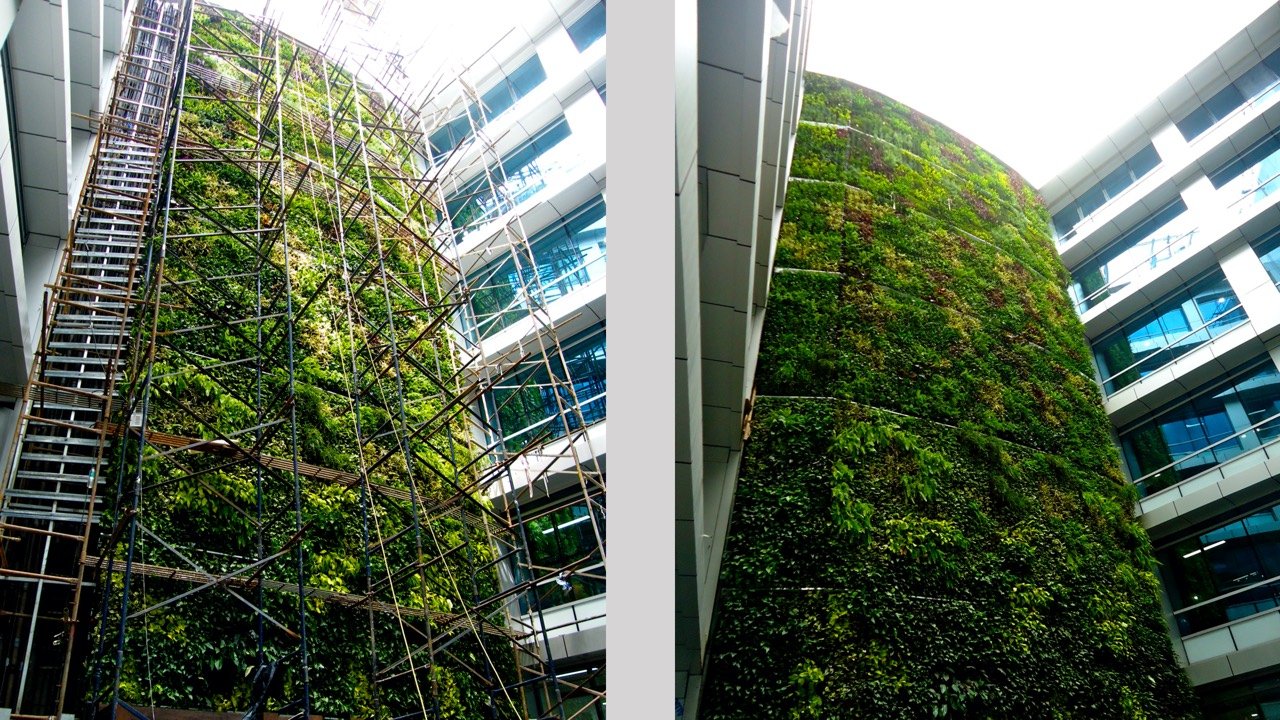
01 Mar Green Walls- Fusing Technology with Nature
Green Walls- Fusing Technology with Nature

The Start of the Intentional Green Wall
The green wall became popular again in the 1930s when American professor of landscape architecture Stanley Hart White discovered botanical bricks. He patented them and renamed them as vegetation-bearing architectonic structures. While he had a good concept, his invention wasn’t necessarily practical and so it didn’t take off.
The Discovery of the Living Wall
Later, the living wall found a new popularity when a botanist, engineer, and architect respectively collaborated in 1986. It was the vision of Patrick Blanc, Peter Rice, and Adrein Fainsiliber. These three masterminds completed the first living wall at a science museum in Paris. While this might have started out in the scientific realm, the possibilities for architecture were soon realized. The wall didn’t require soil, and that is why its applications worked.
Australia- The Ideal Land for Green Walls
Right now, Australia has the perfect climate for these living walls. Like a lush, vegetative and tropical island, Australia provides optimum conditions for growth. Vista Concepts is an Australian supplier that brings these creations to life. Architects design these walls to be specifically pleasing to the eye as well as able to grow within a sustainable system like Blanc et al’s creation.
The Two Types of Green Walls
There are two types of walls when it comes to greenery. One is a green facade. This is done with plants that still have their roots on the ground. The other type is the living wall (Green Wall or Eco Wall). A living wall has supports that give nutrients and they have an irrigation system for them in place. Both of these are great concepts that have each specific advantages.
Advantages of Green Facades
Green Facades are easy to grow outside. You can install a trellis or cable on the side of a building to prevent the plant from damaging the structure of the building. They can be easily taken down if you don’t want it anymore. However, there are many advantages to having a green facade. You can soundproof the house to a certain extent as the plants absorb some of the outside and inside noise. Additionally, the wall provides protection from storms and rain. Also, the plants can shade the home and cool it down a bit. These are all reasons to consider a green facade.
The High Points of Living Walls
Living walls can be set up inside. They can add life to a room through decor as well as providing extra oxygen. They are also referred to as ecowalls, bio-walls, and vertical gardens. You can instal them almost anywhere inside a building. You can’t remove them as easily though without destroying the wall. They are supported by a growing medium which is usually packed soil or fiber mats. As you can see, these plants still need soil but they do not necessarily need a ground-level soil base. The living walls are further categorized by how they are supported and what is used to grow them.
The plants don’t just give oxygen to the air inside. They can also remove dust particles from the air and they can add extra humidity. It’s really like buying a humidifier and air detoxifier in one. It’s easy to see why many organizations are opting for living walls within the walls of their company.
Conclusion
To remain in harmony with nature in the big city, sometimes dramatic steps need to be undertaken. This is where the green walls come in handy. They can give a wallscape where there was only a piece of drywall. They can also enhance the well-being of everyone that lives and works in the building. While they are no easy feat and are intensive projects, the living wall shows that green walls really are the wave of the future and not a sign of what has passed.

